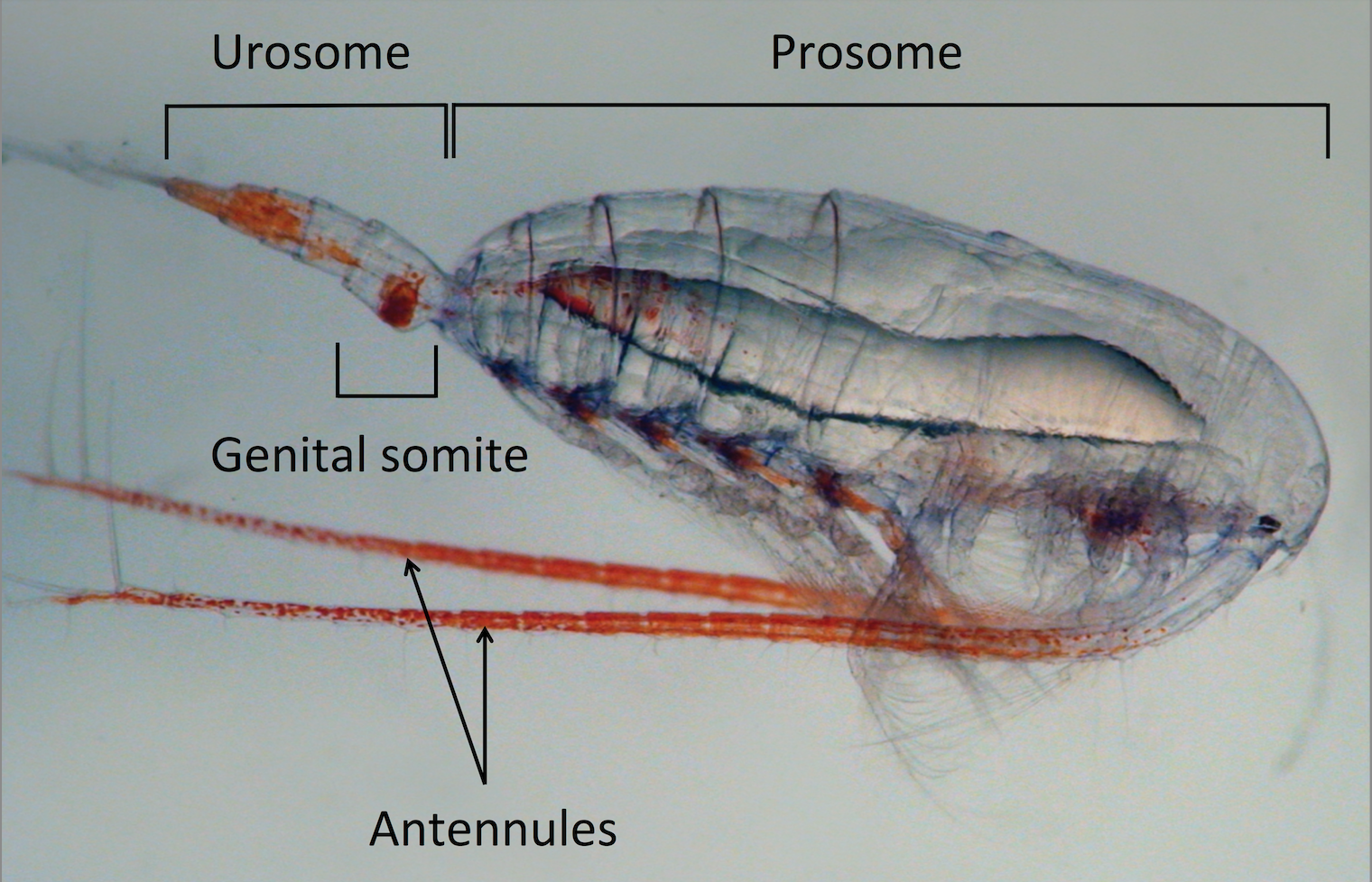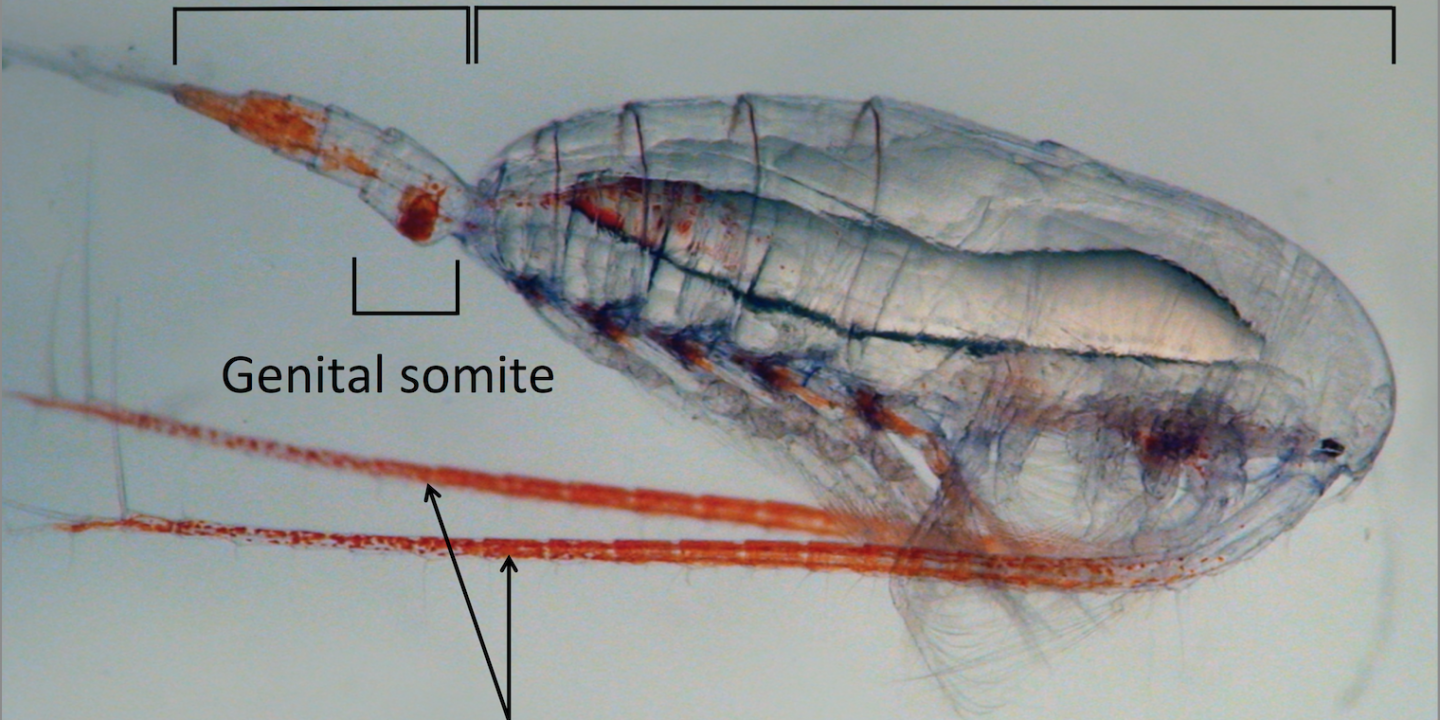For our 4th door, let’s dive into the marine realm of zooplankton!
The plankton refers to all organisms that do not have the strength to swim against the currents and end up drifting with them. The phytoplankton is the algae part of plankton, while the zooplankton is the animal part.
Marine zooplankton are hugely abundant and play important roles for ecosystems, they are the food source sustaining fish stocks and are also preyed upon by marine birds, marine mammals, and other invertebrates. There are more than 6,000 described species of zooplankton that spend their entire life cycle in the water column. Their diversity is impressive with 11 phyla and 27 orders represented.
However, it is very likely that we are largely underestimating the actual diversity of marine zooplankton. Thus, morphologically alike species (i.e., cryptic species) are common in the world of zooplankton and genetic methods of species identification (based on DNA) have started to uncover the hidden part of zooplankton diversity.
It is particularly important for scientists to accurately delineate species because many zooplankton are used as “beacons of climate change”. It was shown that marine zooplankton are the first responders to environmental changes, shifting their distribution ranges in response to changes in their habitat, which can have consequences for the whole ecosystem. Consequently, scientists are monitoring their distributions to follow impacts of climate change on ecosystems. But, to be able to use zooplankton species as climate change indicators, we need to be able to reliably identify them, especially because different species may have distinct responses to climate change.
Here, I will present three recent examples of hidden or cryptic species of particularly important zooplankton that my team and I uncovered with the help of genetics.
Copepods

In the taxonomic group of Copepods (part of the Crustaceans), species of the genus Calanus are often used as indicators of temperature change in the North Atlantic and Arctic Oceans. These are keystone species for marine ecosystems and considered as the most abundant organisms on Earth. Four species are known to occur in the North Atlantic and Arctic Oceans, each associated with a distinct habitat.
Traditionally, Calanus species were identified by looking at the variation of a set of morphological characters: their prosome length, the pigmentation of their genital somite and antennules, the structure of their fifth pair of swimming legs. However, using a small set of molecular markers to look at 6 regions of their DNA, we were able to show that none of these morphological characters were species-specific. While morphology was useful in some specific instances (certain geographical regions or certain times of the year), it also led to extensive misidentification and consequently biases in our understanding of climate change. Therefore, DNA must be used to ensure reliable species identification in this important group.
Pteropods
In the group of shelled pteropods (part of Molluscs), Limacina bulimoides is considered a valuable indicator of ocean acidification. Its thin shell is made of carbonate calcium and very sensitive to low pH that may dissolve it. The species was thought to be circum-global and present in all oceans.
However, a thorough molecular investigation looking at variation of their DNA revealed the presence of three genetically distinct groups: one in the Atlantic Ocean, one in the Pacific and an Indo-Pacific one. While slight variations of their pigmentation was observed (see figure below), it was difficult to link this variation to separate each lineage.
Being used as indicators of ocean acidification, it is critical to acknowledge and consider the presence of three genetically distinct lineages (more evidence is needed to call them “species”) as they may exhibit different levels of sensitivity to acidification.

Krill
Krill are well-known crustaceans extremely abundant in the Southern Ocean but present in all oceans. The taxonomic status of Euphausia similis and Euphausia similis variant armata has long been unclear as morphology alone was unable to reach conclusions. A slight morphological variation between the two was identified: a spine on the third abdominal segment (see photos below), but taxonomists were unsure as to whether this was sufficient to classify them as distinct species. However, a large-scale comparative study of their DNA brought sufficient evidence to conclude that they are, indeed, isolated genetically and can be called distinct species.

![]()
